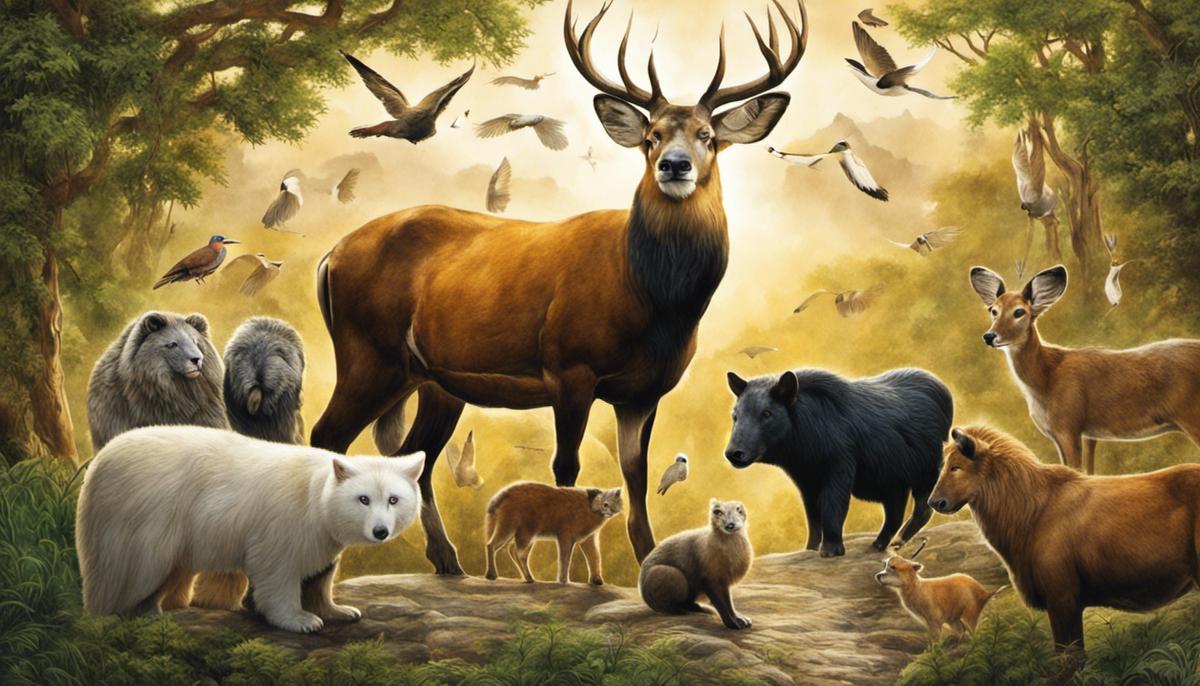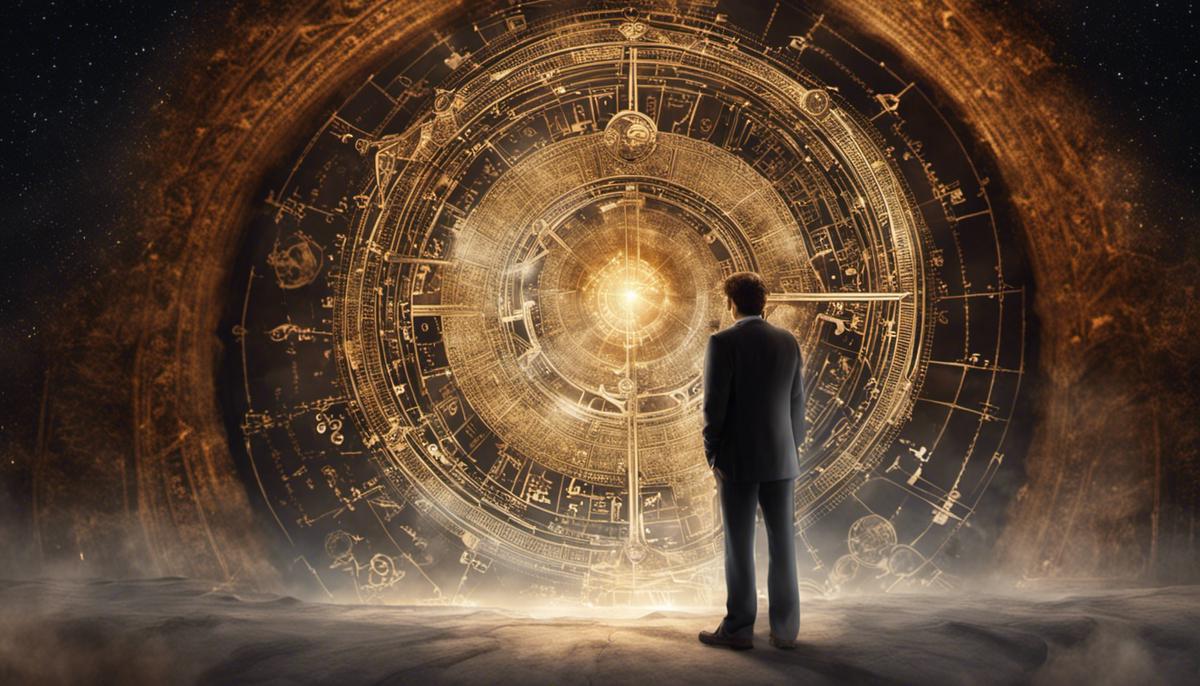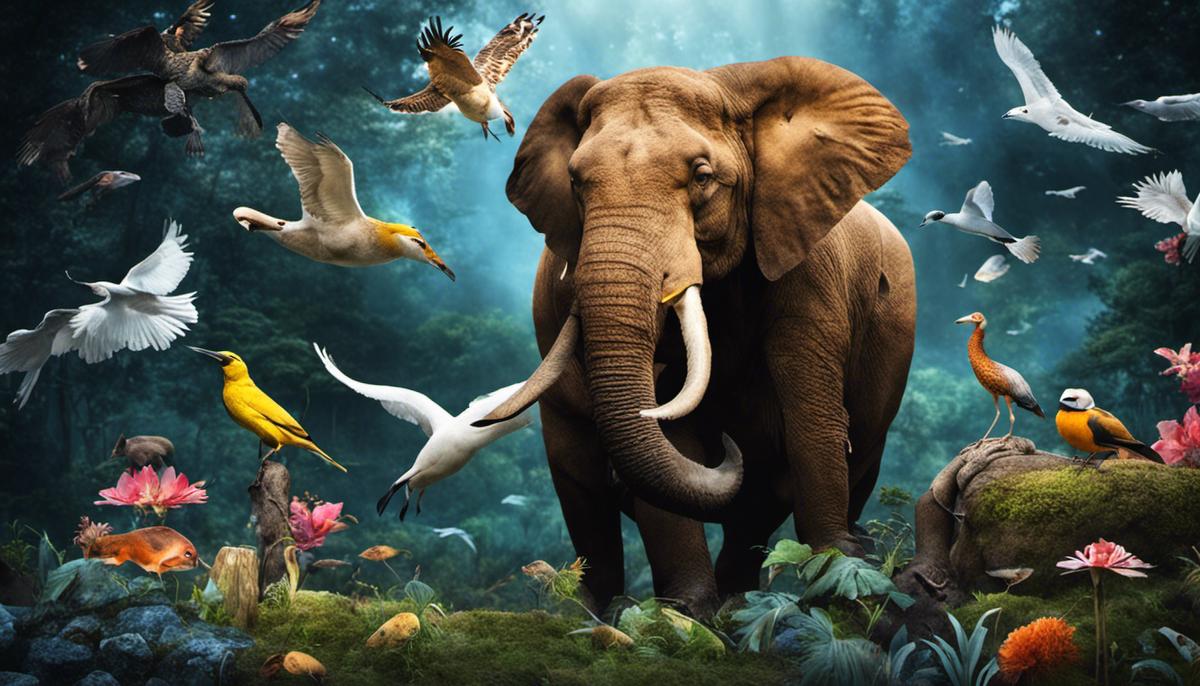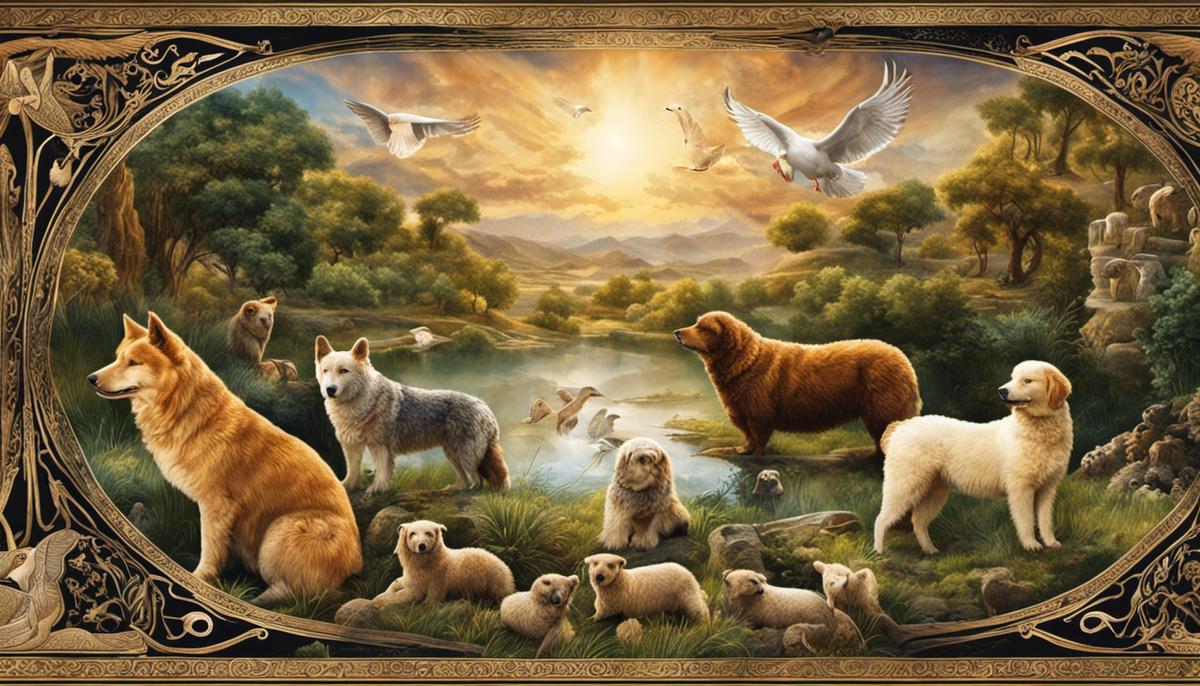Probing the depths of our subconscious, dreams offer a surrealist landscape that echoes with symbols and motifs, which often carrying profound meanings. Among these symbols, animals hold significant prominence, particularly within the realm of biblical symbolism. Biblical animal symbolism, while embedded in the cultural context of ancient times, has unexpected relevance and resonance in contemporary dream analysis. Drawing from Carl Jung’s concept of the collective unconscious, biblical animal symbols in dreams can often provide fascinating insights into our subconscious. This engagement illuminates our inherent human predispositions, unconscious desires, and the shadowy architecture of our psyche.
Introduction to Dream Psychology and Biblical Symbolism
In the scope of academic disciplines, the intriguing interplay between dream psychology and biblical symbolism carries historical precedents and continues to provoke scholarly curiosity. This interdisciplinary exploration cogently fuses two remarkably distinctive fields of study, illuminating unexpected connections that invite thought-provoking discourse and research.
Dream psychology, originated in the pioneering work of Sigmund Freud and Carl Jung, delves into the realm of the unconscious mind. Freud posited that dreams are the disguised fulfillments of repressed wishes, while Jung advocated for the theory of archetypal symbols existing in a collective unconscious. Both of these luminary figures committed substantial efforts in their research to facets of symbolism, unearthing an intimate relationship between dream psychology and symbolism.
Biblical symbolism, on the other hand, is an integral part of theological studies. The Bible, rich in symbolic language and imagery, provides scholars an abundant source for probing the human psyche, spirituality, and cultural motifs. Biblical scholars frequently employ hermeneutic and exegesis methods, decoding the multilayered meanings within biblical passages and rituals, often reveled through symbols.
The intersection of these two scholarly disciplines unveils a fascinating nexus in the venn diagram of academic pursuits. Herein, biblical symbolism and dream psychology entwine, promulgating synergistic, multidisciplinary research with promising depth and breadth of study.
One can trace the use of biblical symbols in dream analysis to the interpretive work of Freud and Jung. Freud often interpreted dreams within the context of individual psychological history and tended to relate biblical symbols to personal neurosis. In contrast, Jung saw biblical symbols as part of the collective unconscious, highlighting the shared, archetypal meanings across cultures.
Deciphering biblical symbols in dreams involves the challenging process of dream interpretation, requiring scholars to be conversant in psychoanalytic theories, biblical studies, and cultural anthropology. This interdisciplinary approach fosters insights into the human psyche’s subjective interpretation of religious symbols in dreams, greatly enriching our understanding of human cognition and spirituality.
Furthermore, contemporary scholarly interest has burgeoned in studying how biblical symbolism in dreams influences society on various levels—individual, collective, cultural, and even political ideologies. This academic conversation holds significant implications on our understanding of identity formation, interpersonal relations, cultural shifts, and societal transformations.
In essence, the academic background of dream psychology and biblical symbolism yields a compelling confluence. This sophisticated interface invites researchers across disciplines—psychologists, theologians, anthropologists, sociologists, and cultural scholars—to engage in collective dialogue, seeking to unravel the enigma of human consciousness and the perennial influence of symbolic language on human experience. This interdisciplinary domain certainly opens fresh avenues for profound scholarship and scientific discovery.

Animals as Dream Symbols in the Bible
Animal Symbols in Biblical Dreams: A Detailed Examination
Animal symbolism is deeply ingrained in biblical interpretation, permeating layers of allegory, parable, and apostolic vision. Over the course of history, these biblical symbols are attributed with various meanings, enhancing the richness of spiritual interpretation. By weaving these symbols into narratives and dreams, spiritual and religious beliefs are contextualized, aiding our understanding of the intricate workings of the human mind and the wider society.
Various animals repeatedly appear in biblical dreams as vibrant symbols. Dogs, frequently depicted in a negative light, symbolize uncleanliness or moral impurity in ancient Near Eastern cultures. Their appearance in biblical dreams may thus represent moral imperfection or potential spiritual lapses. On another end of the spectrum, locusts, while a plague in reality, are symbolic of divine punishment or coming difficulties. Dreams involving locusts might be interpreted as premonitions of hardship or punitive action due to wrongdoings.
The snake holds complex connotations across biblical texts. Often called the serpent, it is largely seen as a symbol of deceit, temptation, and sin, as it famously appears in the Adam and Eve narrative. Yet in other aspects, the snake also represents wisdom, healing and transformation. These contrasting interpretations speak to the multifaceted nature of biblical animal symbolisms and their use in dreams.
Perhaps one of the most widely recognized animal symbol is the lamb, largely associated with Jesus Christ. Typically, it represents innocence, purity, and sacrifice, painting images of unblemished piety. Dream encounters with lambs might speak to divine intervention or spiritual guidance and growth.
Bears, usually perceived as menacing creatures, symbolize destruction and danger in biblical dreams. They’re often harbingers of spiritual or physical threats, vilified by their raw power and ruthlessness within wild nature. Owl, on the contrary, is associated with wisdom and knowledge, echoing the dichotomy in the animal kingdom and exhibiting the dual aspects of life itself.
Unraveling the meanings behind animal symbols in biblical dreams offers insight into the heightened subconscious during sleep, providing a unique combination of psychological reflection and religious understanding. These animal symbols lend a voice to the mute dreams, narrating stories of individual psyches or collective cultural ethos.
While there’s much left to understand about these ancient symbols, the persistent appearance of animals in biblical dream narratives assures their significance in the realm of spirituality and psychology. Isolating their meanings, however, can be a complex endeavor, reliant on the interpretation’s context – biblical verses, prophetic traditions, and societal norms. The exploration of these symbols proves to be as entrancing as the dreams themselves, merging the threads of past narratives to meet the modern-day understanding, and highlighting the abiding influence of biblical symbolism on conscious and subconscious cognition.

Cultural Implications on Biblical Animal Symbols
As we delve further into the captivating realm of dream analysis and scrutinize its intersection with biblical symbolism, it becomes ever more apparent that cultural influences cannot be ignored. The interpretation of biblical animal symbols in dreams can markedly differ across cultures – a topic not to be taken lightly.
The field of anthropozoology, which explores the myriad ways humans interact with animals, is instrumental in understanding culturally divergent perceptions of animals. This discipline underpins the interpretation of such symbols, revealing the deeply ingrained beliefs that can shape the understanding of these dream elements.
Consider wolves. They are frequently cast as predators, symbolic of wildness, strength, and solitude in Western cultures, influenced largely by biblical portrayals. However, within Native American culture, the wolf garners a more nuanced character – it’s seen as a creature of wisdom and courage, a spirit animal that guides and protects. This dichotomy exemplifies the chasm that can exist in interpreting the same symbol based on cultural moorings.
Similarly, the lion, in the biblical context, can be an emblem of both terrorizing might and divine power – seen in the portrayal of Christ as the “Lion of Judah”. This contrasts starkly with Eastern cultures where the lion is a symbol of protection and regality, banishing evil spirits.
Transcending the dichotomy of good and evil, animals such as the dove carry profound symbolism across cultures. Universally, they signify peace, innocence, and messengers of God. Yet subtler cultural elements may influence their interpretation. In Chinese culture, for example, doves also symbolize longevity and love being associated with long life and romantic loyalty.
On stepping into the realm of aquatic creatures, we find the fish, which holds immense biblical importance. It signifies abundance, fertility, and the manifestation of Christ himself. But again, cultural contexts may introduce shades of interpretation. In Eastern cultures, fish represents prosperity, harmony, and good luck, underpinning a different dream analysis outlook.
This academic delve into cultural impact on dream interpretation illuminated not just the subjectivity but also the richness of symbolism, showcasing a grand tapestry interweaving animal symbols, dreams, and cultural understandings.
By acknowledging the complexity of these cultural perspectives, we nurture a more comprehensive and refined interpretation of biblical dream symbolism, resonating with each individual’s unique cultural backdrop. The explication of biblical animal symbolism in dreams thus traverses the realms of dream psychology, cultural anthropology, and theology, revealing an intricate narrative that is unmistakably and fascinatingly multidisciplinary in nature.
Conclusively, understanding these culturally influenced interpretations of biblical animal symbols in dreams is truly an intellectual feast – an exercise that strengthens our knowledge of the fascinating world of dreams, and more importantly, sharpens our grasp on the interactions between religion, psychology, culture, and the unconscious mind. Our comprehension isn’t just enriched, it is exhilarated.

Case Studies of Dream Interpretation with Biblical Animals
Continuing on this complex exploration of biblical symbolism in dreams, it’s critical to acknowledge the role of socio-cultural components in shaping the interpretation process. The societal values, traditions, and myths surrounding certain animals greatly influence the ways they are perceived, thus influencing their representation in dreams.
Take, for instance, the symbol of the wolf. In Western cultures, it often signifies loyalty, instinct, and spirit, whilst in some Native American cultures, the wolf symbolizes courage and endurance. This cultural backdrop significantly impacts the interpretation of the wolf as a dream symbol, contributing to the subjective experience of the dreamer.
Similarly, lions in dreams often evoke powerful, diffused connotations. In biblical context, the lion predominantly symbolizes strength, courage, and leadership – often seen as the representative symbol of God’s majestic power. However, in Eastern cultures, the lion is a protector and a symbol of wisdom. Such multi-dimensionality necessitates a culturally sensitive approach to dream interpretation.
Moving onto the symbol of the dove, universally recognized as an emblem of peace, purity, and harmony. It also maintains an essential role within the biblical sphere, representing the Holy Spirit. The consistent global view of the dove broadly aligns its interpretation within dreams.
The symbolism of fish is another important consideration, particularly given its ubiquitous presence in numerous cultures and religions. Biblically, the fish is an icon of faith and abundance, bearing significant links to the character of Jesus Christ himself. However, in the Eastern cultures, particularly through the symbol of the Koi fish, it represents strength, perseverance, and good fortune.
Biblical animal symbols in dreams are a fascinating study characterized by richness and complexity. Their interpretation is multi-faceted, dependent on a slew of factors from individual sub-conscious cognition, theological understanding, historical context, to cultural norms and beliefs. Such highlights the multidisciplinary nature of its study, involving not merely the domain of dream analysis or biblical interpretation but also anthropology, sociology, cultural studies, and much more.
In conclusion, acknowledging the cultural influence on the interpretation of animal symbols in dreams is vital for reaching a comprehensive understanding. It illuminates the role of societal norms and values in shaping our subconscious cognition and provides a holistic view of the way religious symbolism permeates our dreamscape. Only through this multi-disciplinary exploration can we fully comprehend the rich tapestry of biblical animal symbols in dreams and their significance to individual and socio-cultural psyche. Embracing such complexity enhances our understanding of human imagination, cognition, and spirituality.

The Impact of Animal Symbols on Modern Dream Interpretation
Biblical animal symbols, for many years, have played a pivotal role in shaping the area of modern dream analysis and interpretation. Tap into any religious, anthropological or psychological sphere and one is likely to notice the clear imprints of these symbols. The present discourse will delve into a discussion pertaining to how these symbols have proliferated the psychological domain of dream interpretation, wherein their central significance can’t be overlooked or underestimated.
Embarking on this intellectual journey, a clear surge in the importance of biblical animal symbolism in dreams becomes a striking revelation. Reinforcing this notion is the symbolic representation of dogs in biblical studies. Seen through the lenses of dream analysts, dreamt dogs often surface as symbols of moral impurity or spiritual lapses, indicating profound lapses in the dreamer’s personal life, often alluding to a strained moral compass.
Next, the enigma of locusts is an intriguing subject. In the biblical narrative, locusts are potent symbols of divine punishment or impending difficulties. Transposing this to the realm of dream analysis, these insects, when they make an appearance, warn of looming challenges in the waking life of the dreamer.
Peeping into the darker representations, the symbolism of the snake is multifaceted, oftentimes signifying deceit, temptation, sin, wisdom, healing, and transformation. This wouldn’t be surprising for anyone remotely familiar with the biblical story of Adam and Eve. Consequently, sighting a snake in dreams is invariably viewed with utmost seriousness, as it relays crucial cues about the dreamer’s life.
Moreover, it’s fascinating to observe how the innocence and purity of a lamb has been symbolically transcribed into the field of dream interpretation. This unassuming creature frequently pops up as a symbol of innocence, sacrifice, and divine intervention or guidance.
On the other end of the spectrum, when dream analysis tackles symbols like bears or owls, the understanding takes a slightly different turn. Bears, construed as symbols of destruction and danger, ostensibly spotlight impending predicaments or hostile elements looming in the individual’s waking life. Contrarily, dreamt owls, much akin to their symbolic status in Western culture, are reflective of wisdom and knowledge. This suggests that the dreamer might be entering a phase of learning and enlightenment.
Transposing biblical animal symbolism into the frame of dream interpretation presents dynamic layers of understanding. Not only do these symbols give a unique, introspective understanding of personal psyches, but also they connect us to shared, collective narratives that have for centuries deeply influenced human thought and behavior.
Finally, the incorporation of anthropozoology in understanding these animal symbols cannot be understated. For instance, the symbolism of wolves and lions varies greatly between Western, Native American, biblical, and Eastern contexts. A wolf in one culture may stand for courage and strength, but signify destructive forces in another. Similarly, the lion might denote majestic power or ominous threats. Therefore, shedding light on a subject as benign as the dove, universally recognized as a symbol of peace, accentuates the inexhaustible reservoir of meanings animal symbols can offer.
Overall, the study of biblical animal symbols in dreams is a testament of the intricacies of human imagination, cognition, and spirituality and the enormous task bestowed upon psychological studies and dream analysts today.

From the majestic horsemen of the Apocalypse to the deceptive snake in Eden, biblical animal symbols have seeped into the framework of our dreams, adding layers and dimension to their interpretation. Their significant influence on modern dream analysis illuminates an enticing intersection of psychology, spirituality, and cultural anthropology. As we traverse the dream landscapes of historical figures and delve into the dream journals of psychoanalysis subjects, we realize that our dreams, imbued with these ancient symbols, become a dialogue with our subconscious. Guided by a comprehensive understanding of these symbols, we can unravel the mysterious narrative of our dream state, and perhaps glean a better understanding of our cognitive fabric.







